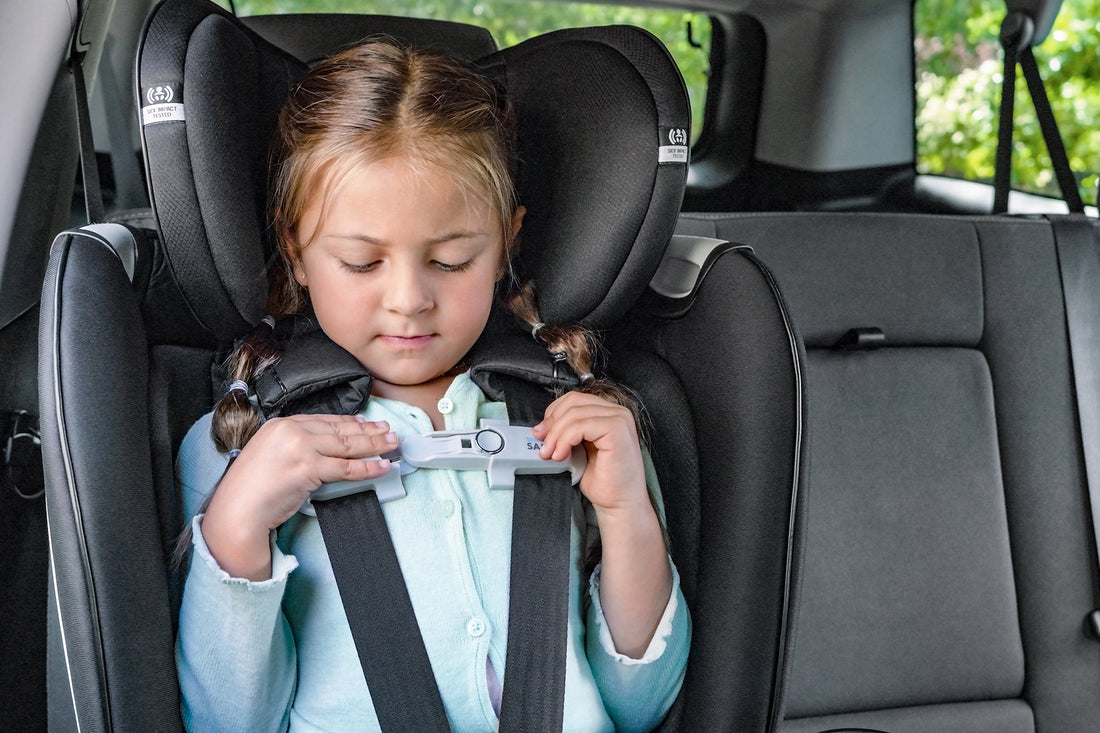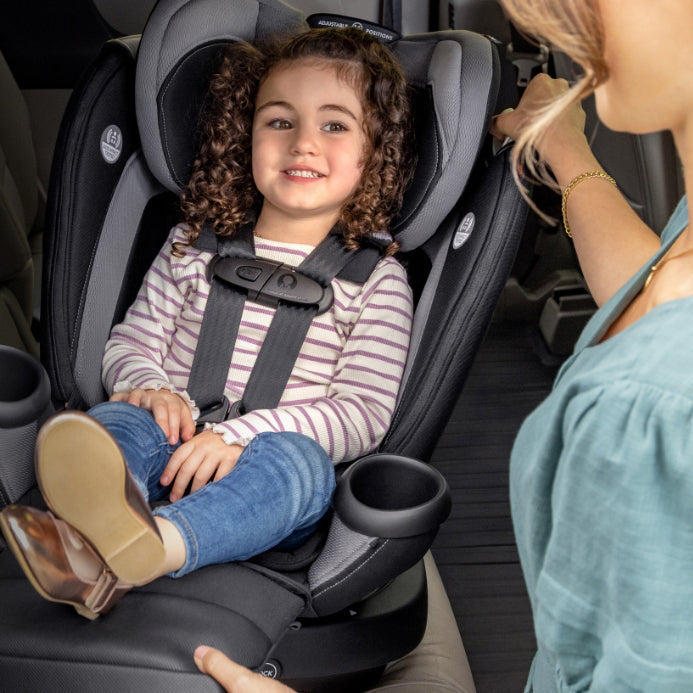
Car Seat Buckles Explained
It can be overwhelming to pick the right car seat for you and your child’s needs. Once you make your choice, it’s important to make sure you’ve got the basics down. There are two main aspects of using a car seat: 1) installing it in your vehicle and 2) harnessing your child. Let’s dive into the second part: harnessing.
How do Car Seat Buckles Work?
The harness is designed to restrain your child and spread crash forces across the stronger parts of their body. Most car seats utilize a five-point harness system. This means that the harness is in contact with five key areas of your child’s body – both shoulders, both hips, and in between their legs. The buckle, positioned between the child’s legs, has an important role to play in harnessing your child. Not only does it add the fifth point of contact, but by design, it prevents your child from submarining underneath the lower portion of the harness. Remember, your child’s harness should ALWAYS be fully buckled when they’re in their car seat — this includes when you take an infant car seat out of your vehicle or when you use it with a stroller.
How should the buckle fit?
Some car seats only have one buckle position, but many offer multiple options. How do you know which position is correct? First and foremost, your car seat’s instruction manual will provide information on how the buckle should be positioned relative to your child’s body. In many cases, instructions will indicate that the buckle should be as close as possible to your child, without being underneath their bottom.
Smaller infants may have a gap between their body and the buckle, even when the buckle is in the inner-most position. In that situation, Evenflo car seats allow you to place a small, folded wash cloth between the buckle strap and the child after you have tightened the harness. Some car seats may also allow you to change the routing of the buckle strap, in order to shorten the buckle and provide a better fit for a smaller infant. All of those details should be included in your product instructions, but if in doubt, contact your car seat manufacturer with your questions.
You may notice that when you move your child from an infant car seat to a larger convertible or all-in-one car seat, the buckle fit looks a little different. The larger multi-mode car seats are designed to fit a wide range of children. As a result, the buckle and placement of the harness straps over the lower half of the child, may not be exactly where they were in the infant car seat. That’s totally normal! Buckle fit and harness positioning will continue to change as your child grows into their larger car seat.
Can you clean the buckle?
We get it — kids and messes go hand in hand. Generally, the plastic portions of your car seat, including your buckle, can be wiped clean with mild soap and water and dried with a soft cloth. The back side of your buckle may have additional cleaning information. You should always be able to release and re-insert each buckle tongue with an audible “click.”
So, that’s it for Buckle 101! For questions about how your buckle operates or how it fits your child, reach out to our ParentLink Consumer Care team.
